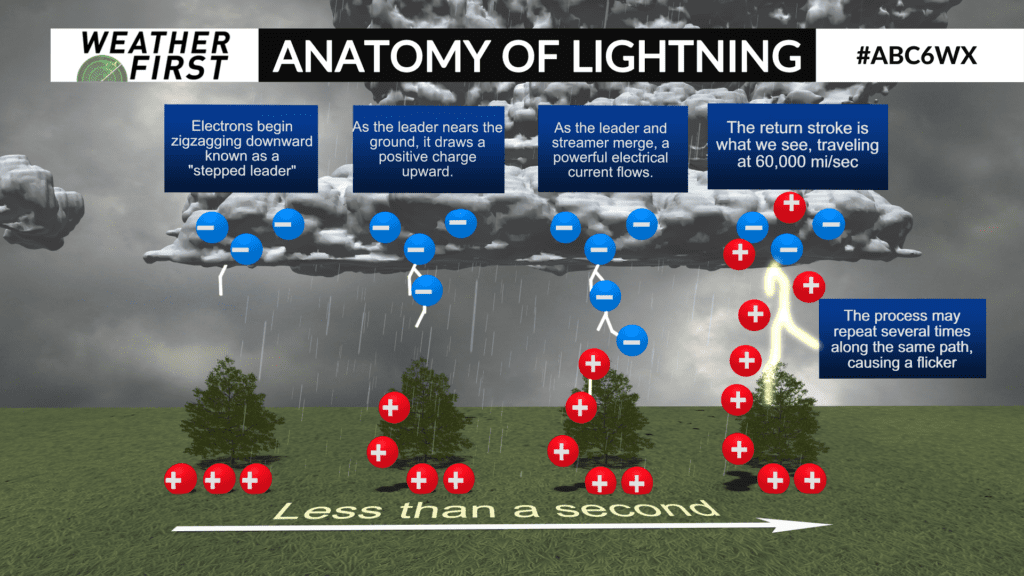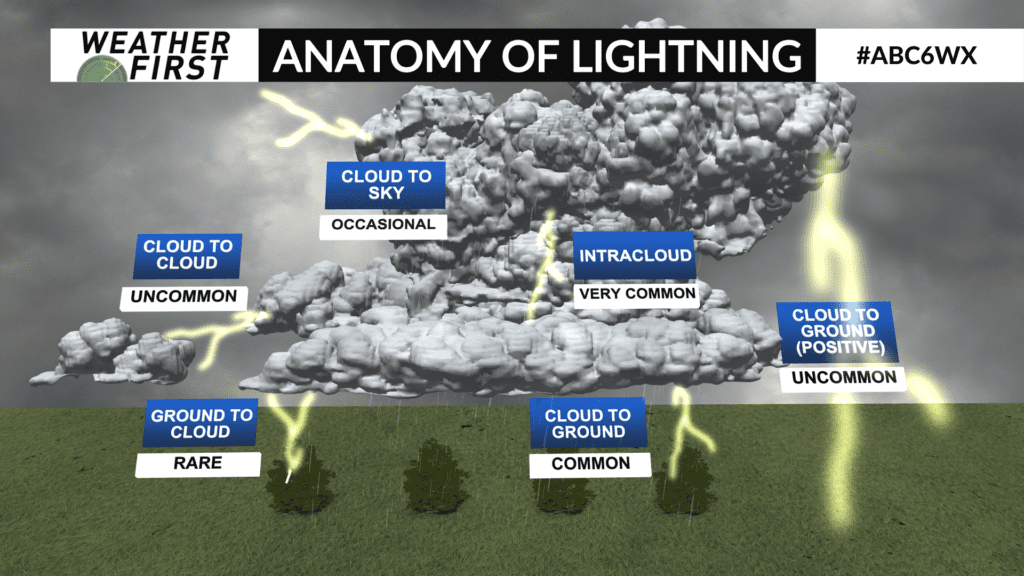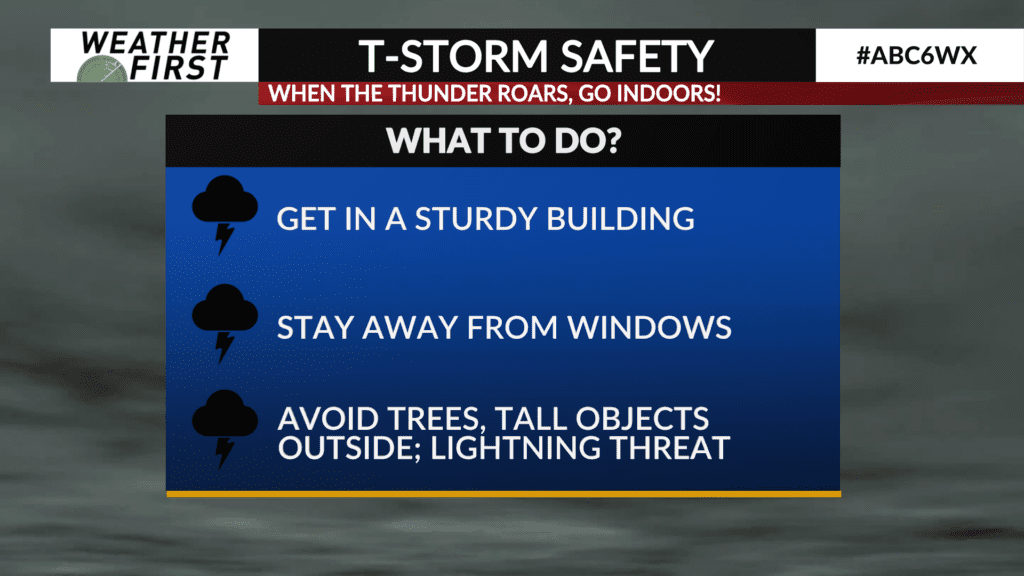Severe Weather Awareness Week: Lightning and Hail
(ABC 6 News) – When people think of severe weather, often times the first thing they think of is tornadoes. They are just one of three criteria to make a thunderstorm severe. The other two are damaging winds of 58 mph or stronger and/or one-inch hail or larger in diameter. Thunderstorms are more than capable of going way beyond this.



Meteorologist Todd Shea from the National Weather Service in La Crosse, WI explains some of the higher ends of the threat. “When you start seeing wind speeds 75-80 MPH, that’s the high end; that’s when a lot of tree damage occurs.”
While neither strong winds nor hail result in a lot of fatalities, both can cause a lot of damage.
Shea adds on how hail, in particular, can be costly. “Large hail too can be a very costly hazard. Roofs, windows, cars, when communities are struck with hail, it can be a devastating financial hit.”
There is another threat often overlooked: lightning. Responsible for around 100 fatalities a year, the best way to avoid getting struck comes down to one common factor.
“It always seems to come back to moving indoors” Shea mentioned.
If you are caught outside during a thunderstorm and cannot make it indoors, crouch down to make yourself as low of a target and avoid tall objects.
If you are able to get into a sturdy structure, stay away from windows. Hail and high winds can be strong enough to break through the glass.
As for lightning, use surge protectors and avoid taking a shower. In the event your house is struck by lightning, it can travel through copper wires and metal pipes and on rare occasions fry your appliances or even strike you.


Severe thunderstorms can see hailstones the size of a ping-pong ball or even rarely a baseball.
The biggest hailstone ever recorded, was 8.2 inches in diameter, which is about the size of a soccer ball.
Download the ABC 6 NEWS NOW app for severe weather, breaking news, and the day’s top stories.